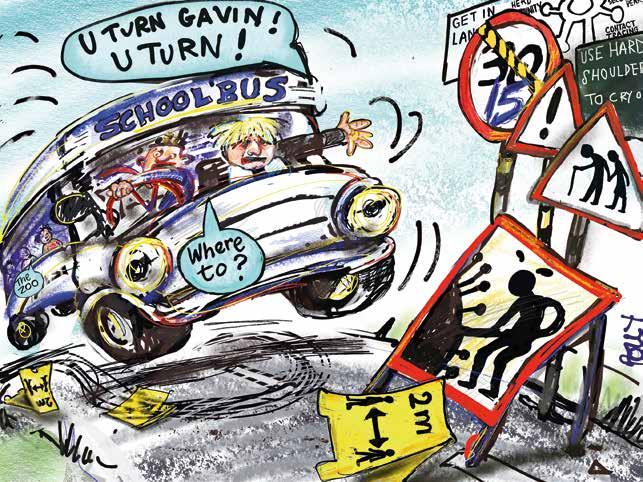International
England’s school reopening policy in context AFTER closing schools to prevent the spread of Covid-19, countries around the world are taking tentative steps toward wider reopening. While safety of pupils and teachers is the yardstick, just how education authorities intend to reopen schools and safeguard community health varies between countries. Are we comparing like for like? Phased reopenings arrive as world leaders wrestle with restarting economies and protecting public safety. Wellbeing and inequality trade-offs in the face of closed classrooms are also central to decisionmaking. However, consensus exists among epidemiologists that relaxing of lockdown measures must coincide with a reduction in transmissions to manageable levels. Since the UK Government announced plans for wider opening of primary schools in England from 1 June, Denmark, Germany and the Netherlands have been used as points of reference by some, including the Secretary of State for Education. But all comparisons must be contextualised. As of mid-June, the UK had recorded 597 Covid-19 deaths per million people, compared to 354 in the Netherlands, 104 in Germany and 102 in Denmark. At the respective times that wider openings began, UK daily confirmed Covid-19 deaths and cases were comparatively higher. The contrasts are stark.
“Spain and Italy, which have a similar death rate per capita to the UK, have closed their schools until September.” Is June too soon? Is September safer? Spain and Italy, two of the three European countries with a similar death rate per capita to the UK (the other being Belgium), have closed their schools until September. Social distancing would be impossible in Spanish schools, concluded a specialist paediatric taskforce formed by the government. A similar consensus was reached in Italy and Ireland. In the US, all but a few states have announced school closures until September, citing the impossibility of reopening schools in a way that would keep children, staff and the community safe. Closer to home, Scotland, has targeted reopening by August.
PHOTO by David Tadevosian
36
educate Your magazine from the National Education Union (NEU)
Limited, cautious, with strict hygiene In Germany, schools first reopened to graduating students and those taking exams. Primary schools began opening in early May, but classes have been split in two, with pupils alternating between school and home for lessons. Schools must be individually riskassessed to determine whether safe opening is possible, according to the German Education Union (GEW). Decisions on reopening are being taken at state level, providing flexibility where the R rate differs across the country. In France, against the advice of his scientific counsel, President Emmanuel Macron reopened schools for early years and primary aged children from 11 May. As Educate went to press, all schools were set to open at the end of June after the whole of France was marked a ‘green zone’ – signalling zero hot spots. French unions secured agreement for additional requirements to be put in place, including a reduction in class sizes from 15 to ten and the wearing of face masks. Other countries, including the Netherlands, have similarly opted for phased re-openings. Half a class will attend school one day and the other half will attend the next. Denmark reopened primary schools in April. Face masks are worn by staff, lunches are staggered, class sizes are below ten, and many lessons are taking place outside. Sweden never closed its schools, opting instead for strict hygiene and social distancing measures. Wider opening, so far, has not been linked to national increases above 1 in the R rate. However, it is still early days and in many countries being used as comparisons, there was a very low baseline rate of infection. Internationally, policy responses to reopening schools have been patchwork. Some have prioritised the return of older children, others younger children, while several countries have deemed it unsafe to reopen schools until September. The UK Government, for example, has now U-turned on plans to return all primary schools before the summer. What is consistent is that openings have been limited, cautious, accompanied by strict hygiene measures and have often taken place only when deaths and cases were markedly reduced and under control.
By Tom McEwan, NEU international policy officer















